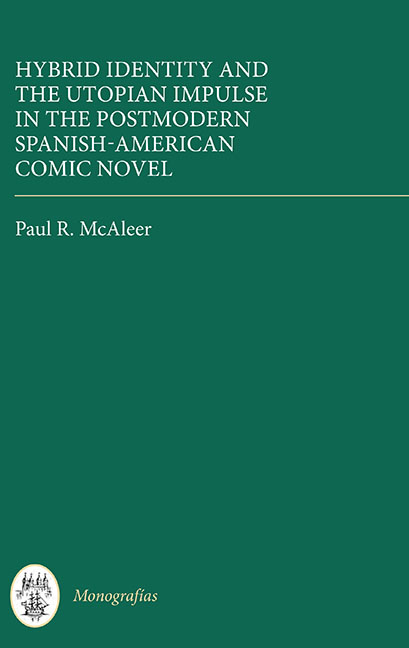Book contents
- Frontmatter
- Contents
- Acknowledgements
- 1 Contextualising the Debate: The European Comic Tradition and the Question of Context
- 2 Gustavo Sainz’s La princesa del Palacio de Hierro: Comedy and the Female Character in Transnational Mexico
- 3 Comic Identity and Cultural Exile in Bryce Echenique’s La vida exagerada de Martín Romaña
- 4 Black Comedy and Identity Loss in Fernando Vallejo’s La virgen de los sicarios: On the Road to Dystopia
- 5 Jaime Bayly’s La noche es virgen: Comic Queer Identities in the Era of Transnationalism
- Utopia, Comedy and Latin American Utopianism: Is This Really the End?
- Bibliography
- Index
2 - Gustavo Sainz’s La princesa del Palacio de Hierro: Comedy and the Female Character in Transnational Mexico
Published online by Cambridge University Press: 07 May 2022
- Frontmatter
- Contents
- Acknowledgements
- 1 Contextualising the Debate: The European Comic Tradition and the Question of Context
- 2 Gustavo Sainz’s La princesa del Palacio de Hierro: Comedy and the Female Character in Transnational Mexico
- 3 Comic Identity and Cultural Exile in Bryce Echenique’s La vida exagerada de Martín Romaña
- 4 Black Comedy and Identity Loss in Fernando Vallejo’s La virgen de los sicarios: On the Road to Dystopia
- 5 Jaime Bayly’s La noche es virgen: Comic Queer Identities in the Era of Transnationalism
- Utopia, Comedy and Latin American Utopianism: Is This Really the End?
- Bibliography
- Index
Summary
Gustavo Sainz is one of the founding members of la Onda, a Mexican literary movement spanning roughly from the mid-1960s to the late 1970s. Like all literary movements, however, la Onda is not easily defined. Critics disagree on its major features and characteristics and, more importantly, exactly what these traits represent in respect of other broader trans-Latin American and transnational movements. Salvador C. Fernández associates the movement with a type of postmodernism that bears all the hallmarks of ‘Western postmodernism’, but, at the same time, a preoccupation with the social, political and economic factors of the geographical confines of Latin America. Donald Shaw identifies the features of la Onda with the characteristics he sees as typical of the post-boom (The Post- Boom, p. 17), features he compares with J. Ann Duncan's work on the movement in which she contrasts the ‘colloquial realism’ of la Onda with the more ‘writerly’ project of writers such as Salvador Elizondo and La Escritura. Finally, to complicate things further, Margo Glantz – the critic who coined the term – has noted that, while La Escritura and la Onda display a number of differences, at times the distinctive properties lose their definition and merge into one.
While it may well be true that the Onda canon is made up of a complex and sometimes contrary body of work – indeed, this contradictory overview could easily be applied to the novels produced by Sainz alone in that they represent a varied body of texts that invite a number of different readings – the early work of Sainz and la Onda is perhaps not so problematic. Critics have recognised a telling number of constant features that characterise the style, structure and thematic content of this early period of output. In La novela mexicana, John S. Brushwood, lending weight to Duncan's comments above, identifies the Onda novel in terms of the costumbrista novel as well as the picaresque genre. Inke Guina notes the importance of ‘el tema de formación de identidad de los jóvenes’ in the movement. Glantz also recognises a number of links between the picaresque novel and, more problematically, the theme of identity acquisition (pp. 101 and 125). More tellingly, Eric Slater Gould, referring specifically to Sainz's Gazapo (1965), states that generically the Onda novel ‘can be viewed as a hybrid of the Rabelasian novel and the Bildungsroman’.
- Type
- Chapter
- Information
- Hybrid Identity and the Utopian Impulse in the Postmodern Spanish-American Comic Novel , pp. 49 - 74Publisher: Boydell & BrewerPrint publication year: 2015



